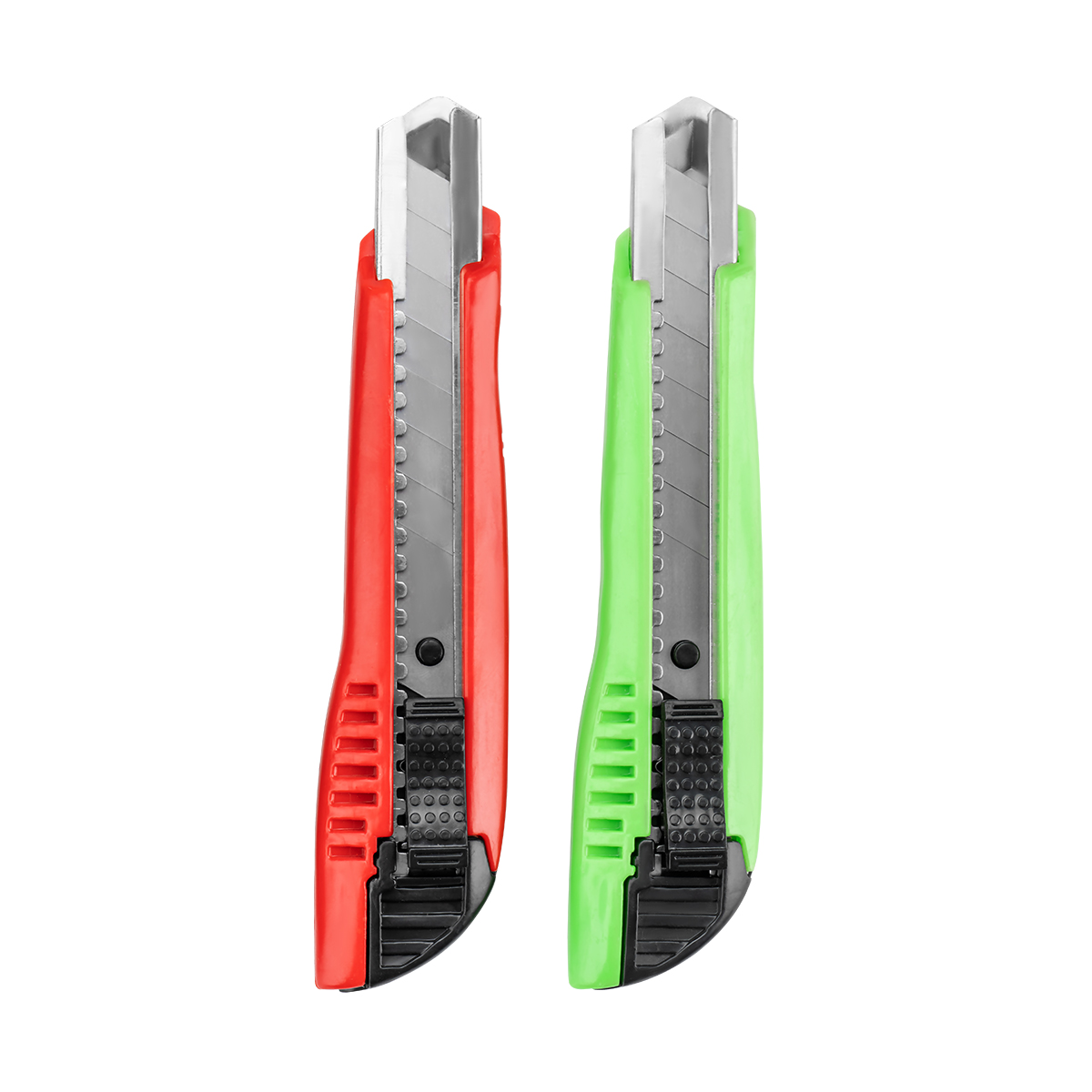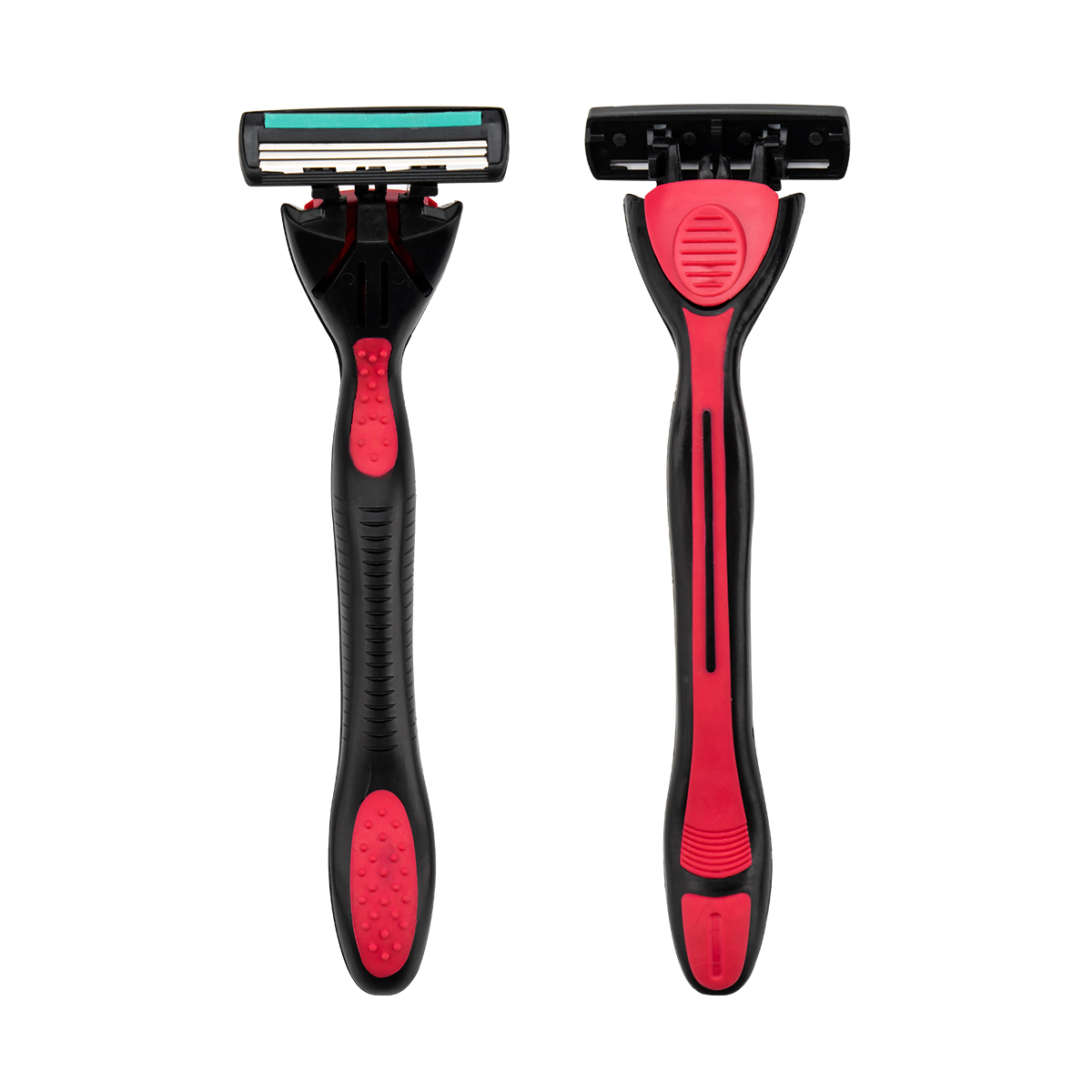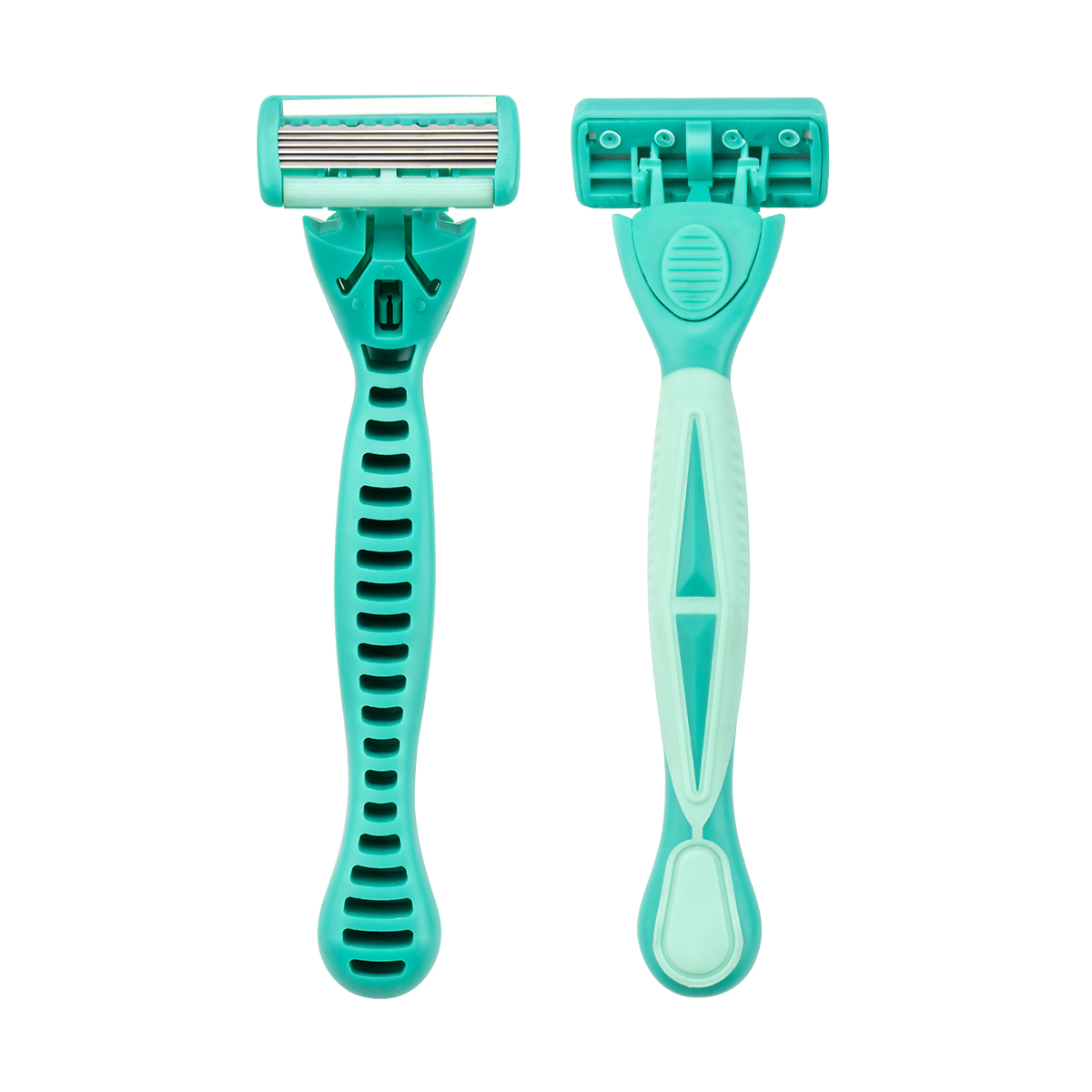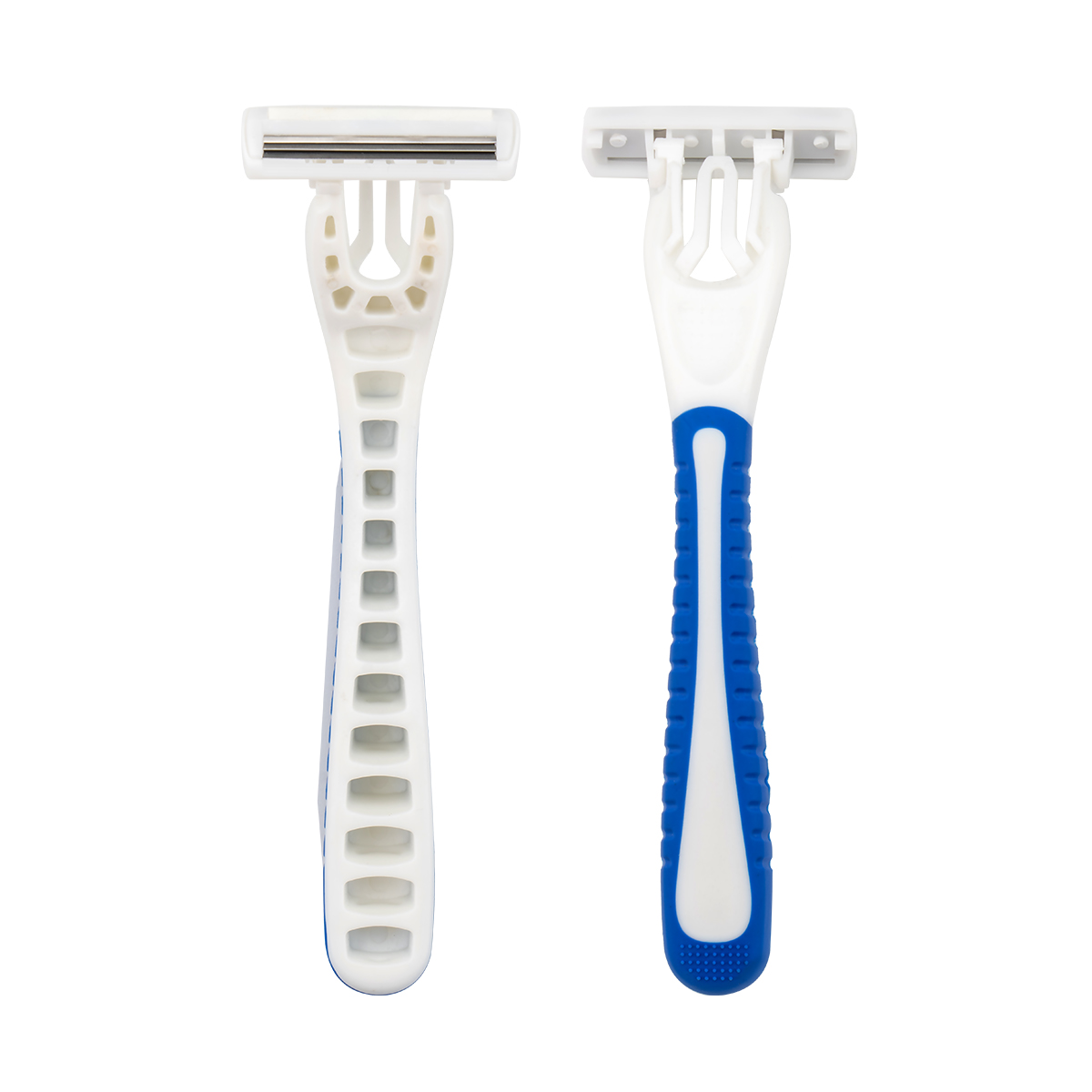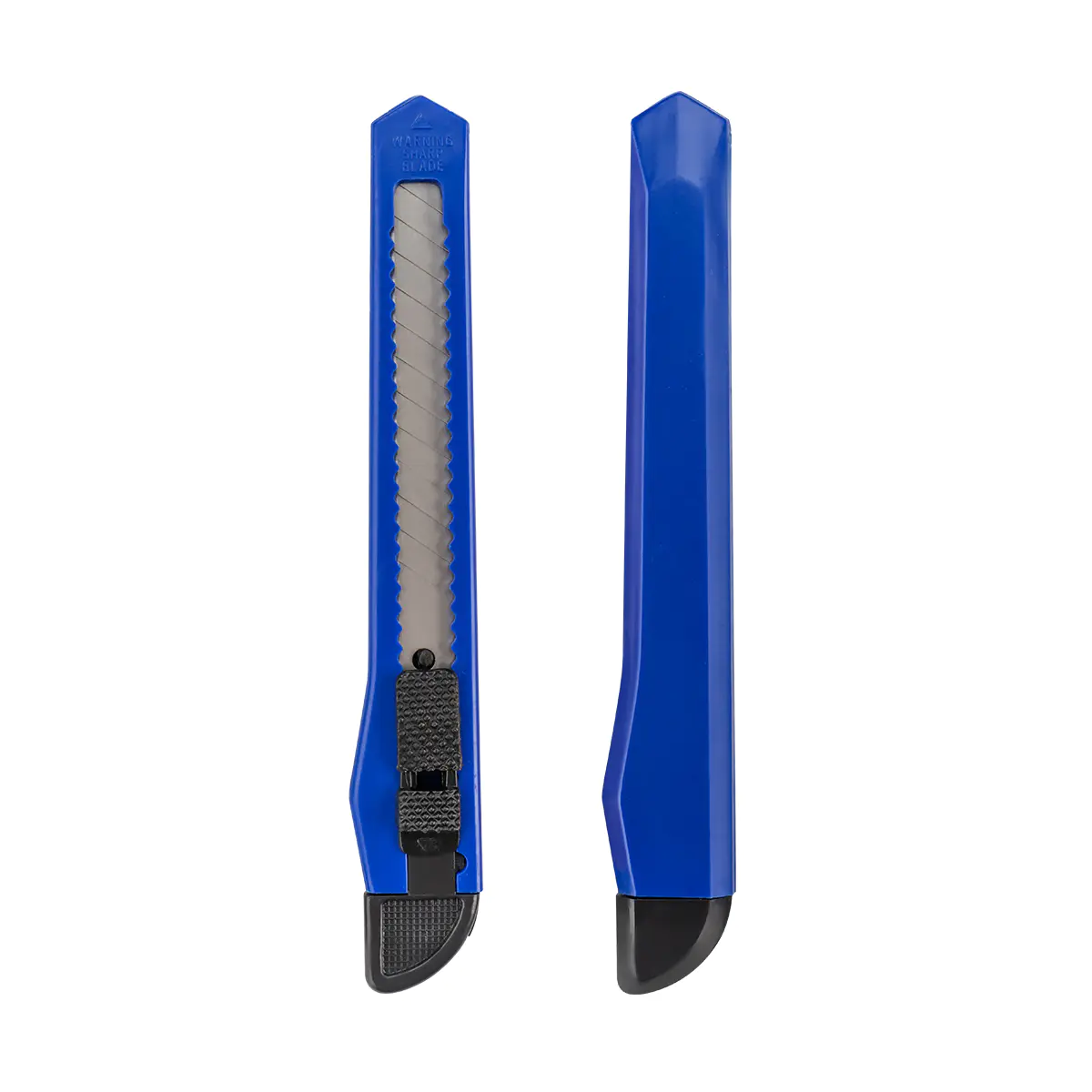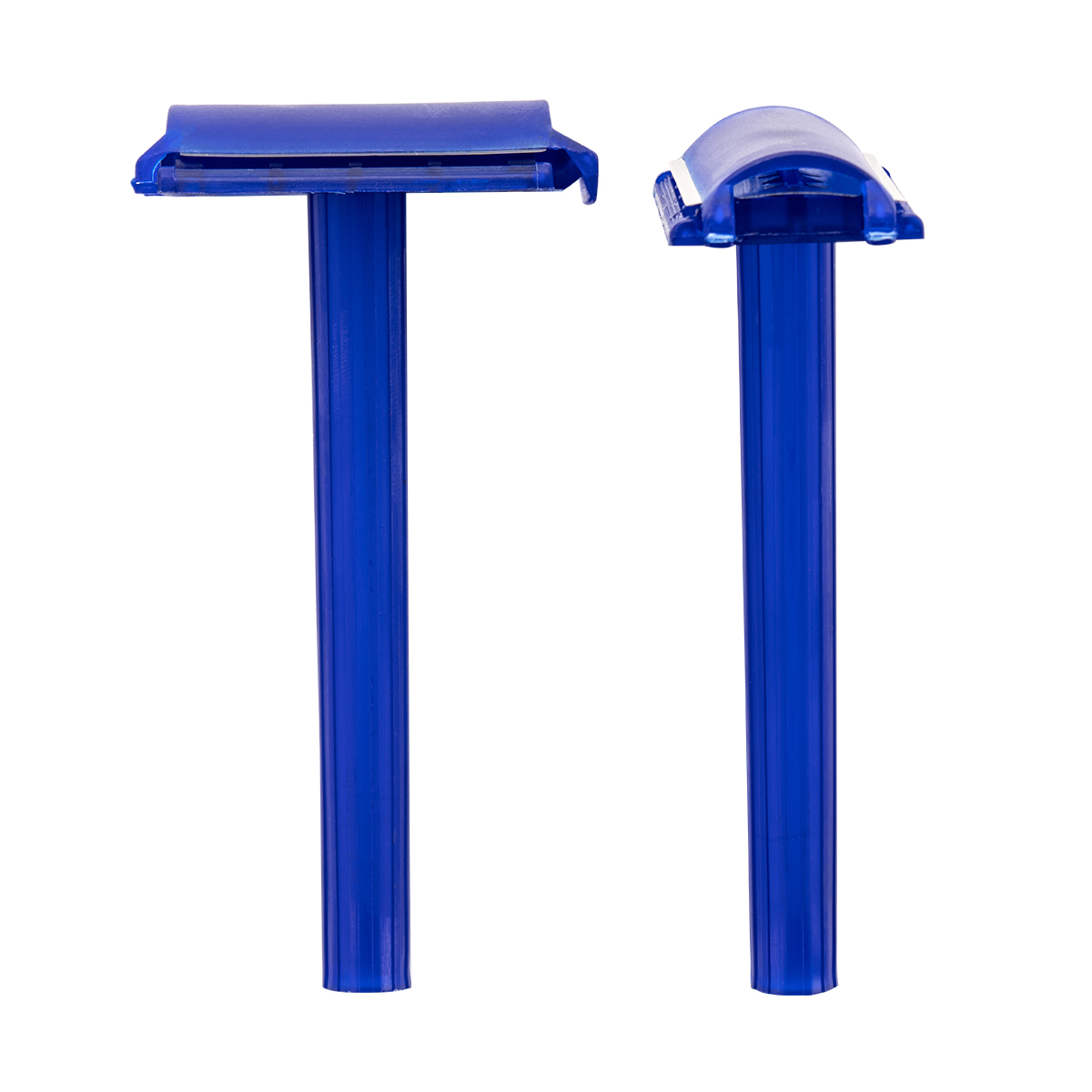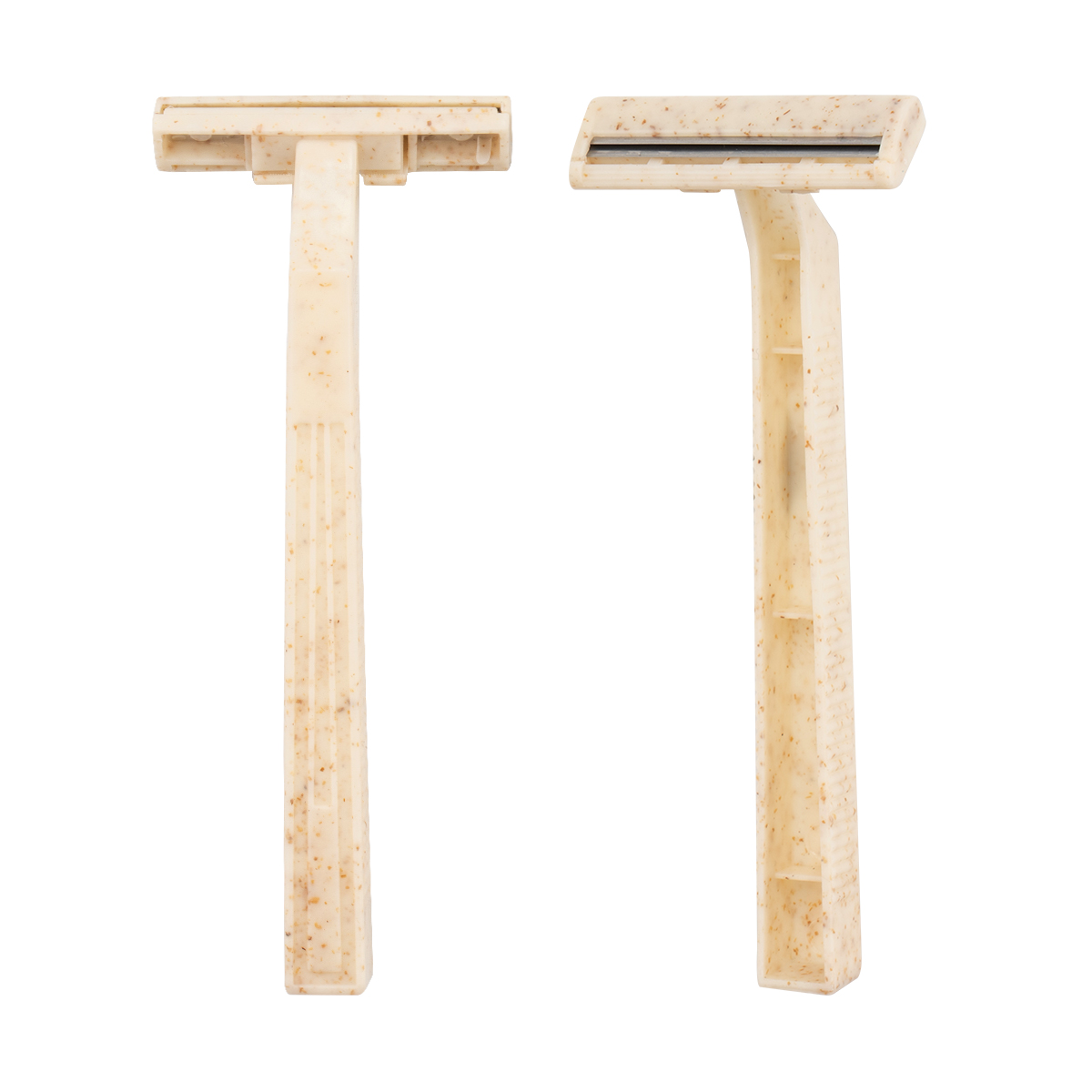We are an industry and trade enterprise
specializing in the production of disposable razors and utility knives for more than 30 years.
Razor News
What are the main uses of disposable medical razors in healthcare
Content
- 1 Preoperative Hair Removal: Ensuring Surgical Site Cleanliness
- 2 Hygiene and Patient Comfort in Hospital Settings
- 3 Preparation for Medical Treatments and Procedures
- 4 Use in Wound Care and Dressing Applications
- 5 Preventing Infection through Single-Use Design
- 6 Use in Dermatological Treatments and Procedures
- 7 Role in Elderly and Bedridden Patient Care
Preoperative Hair Removal: Ensuring Surgical Site Cleanliness
Preoperative hair removal is a widely adopted clinical practice intended to optimize surgical site conditions by reducing microbial load and improving access for surgeons. While hair itself is not inherently a cause of infection, it can act as a reservoir for bacteria, debris, and foreign materials that may compromise the sterile environment required during surgical procedures. The use of disposable medical razors in this context serves to balance the necessity of hair removal with the critical need to preserve skin integrity and minimize infection risk.
Firstly, the timing of hair removal plays a significant role in infection control. Studies indicate that hair removal performed immediately before surgery—preferably within two hours of the procedure—minimizes bacterial colonization compared to hair removal performed well in advance. Disposable medical razors facilitate this practice by providing a fresh, sterile implement for each patient, eliminating concerns related to cross-contamination from prior use or improper sterilization. This single-use approach supports compliance with infection prevention protocols established by health authorities worldwide.
Secondly, the method of hair removal is critical. Among various options such as electric clippers, depilatory creams, and shaving, the use of disposable razors remains prevalent due to their cost-effectiveness, ease of use, and minimal equipment requirements. However, shaving with razors carries risks of micro-abrasions and skin trauma that could increase susceptibility to surgical site infections (SSIs). To mitigate this, disposable medical razors designed for medical use have blades with precise sharpness and safety features that reduce the likelihood of nicks or cuts. These razors often have ergonomic handles that improve grip and control during use, helping healthcare professionals perform hair removal gently and efficiently.
Thirdly, preoperative hair removal requires careful assessment of patient skin condition and hair density. For patients with sensitive skin, fragile skin conditions, or dermatological disorders, disposable razors provide an advantage by allowing healthcare providers to use a new, uncontaminated tool for each shave, thereby lowering the chance of introducing pathogens or aggravating skin damage. Healthcare providers are trained to follow proper shaving techniques, such as shaving in the direction of hair growth and avoiding repeated strokes over the same area, to further protect the skin barrier.
Fourthly, the anatomical site of hair removal must be considered. Different surgical procedures require hair removal in varying regions of the body, including the scalp, chest, abdomen, groin, and limbs. Each site poses unique challenges in terms of accessibility and skin sensitivity. Disposable medical razors with varying blade widths and handle designs accommodate these variations, allowing for precise and safe hair removal tailored to specific surgical sites.
Fifthly, the environmental and logistical aspects of preoperative hair removal favor the use of disposable razors. Reusable razors necessitate stringent sterilization processes, which require time, equipment, and resources. Disposable razors eliminate these demands by being used once and discarded immediately, reducing the workload on sterilization departments and decreasing the risk of procedural delays. Disposable razors reduce the burden of tracking and maintaining reusable instruments, simplifying inventory management in healthcare facilities.
Finally, the importance of preoperative hair removal extends beyond infection control. Proper hair removal enhances surgical visibility and accessibility, allowing surgeons to make precise incisions and reducing the risk of complications related to hair interference. This improvement in operative conditions contributes to better surgical outcomes and shorter operation times.
Disposable medical razors are integral to preoperative hair removal protocols, offering advantages in sterility, patient safety, and procedural efficiency. Their design and single-use nature align with modern infection prevention standards, while their functionality supports effective hair removal across various surgical contexts. The combination of these factors makes disposable medical razors a reliable tool for preparing surgical sites and supporting overall patient care.
Hygiene and Patient Comfort in Hospital Settings
Maintaining personal hygiene is a fundamental aspect of patient care within hospital and long-term care environments. For many patients—particularly those with limited mobility, chronic illnesses, or those recovering from surgery—self-care may be impossible or difficult, necessitating the intervention of healthcare providers. In such contexts, disposable medical razors play a vital role in grooming practices that improve patient comfort, dignity, and overall well-being.
Firstly, shaving with disposable razors contributes directly to patient comfort by addressing issues related to unwanted facial or body hair that may cause irritation, itching, or embarrassment. In hospitalized patients, maintaining a clean-shaven appearance can reduce the accumulation of sweat, oils, and microorganisms trapped in hair, which otherwise might contribute to unpleasant odors or skin discomfort. This is especially relevant in warmer climates or during extended hospital stays when patients are less mobile and more prone to hygiene challenges.
Secondly, the use of disposable medical razors in hygiene routines reduces infection risk. Shared grooming tools have historically been a vector for the transmission of bloodborne pathogens and skin infections. Disposable razors, designed for single use, eliminate the potential for cross-contamination between patients. Healthcare providers adhere to protocols that specify one razor per patient to maintain high standards of infection control, a critical consideration in environments with vulnerable populations, such as intensive care units or oncology wards.
Thirdly, patients with compromised immune systems, such as those undergoing chemotherapy or suffering from chronic illnesses, benefit from the use of disposable razors. The risk of infection from minor skin injuries is heightened in these individuals. Medical-grade disposable razors are engineered with features that minimize the likelihood of skin trauma, such as rounded blade edges and protective guards. This design reduces the incidence of cuts or nicks during shaving, which might otherwise serve as entry points for pathogens.
Fourthly, the psychological impact of grooming on hospitalized patients should not be underestimated. Maintaining a sense of normalcy and personal dignity contributes positively to mental health and recovery outcomes. The ability of nursing staff to provide effective grooming services with the assistance of disposable razors supports these psychosocial aspects of patient care. Shaving is often included in broader hygiene protocols that encompass bathing, oral care, and skin inspection, creating a holistic approach to patient well-being.
Fifthly, disposable medical razors facilitate workflow efficiency for healthcare professionals. Their ease of use, immediate availability, and disposal after use mean that caregivers can perform grooming quickly without concerns about cleaning or sterilizing equipment. This efficiency is particularly valuable in busy hospital wards where time and resources are limited. The ergonomic design of medical disposable razors also reduces caregiver fatigue, as the tools provide better control and comfort during shaving procedures.
Sixthly, hospital protocols often include standardized hygiene kits containing disposable razors to ensure consistency and safety in patient grooming. These kits reduce variability in practice and help maintain compliance with infection control guidelines. Staff training on the proper use of disposable razors includes techniques to minimize skin irritation, recognize contraindications to shaving (such as bleeding disorders or skin infections), and ensure patient comfort throughout the process.
Seventhly, the use of disposable razors extends to specialized patient populations within the hospital. For instance, elderly patients often experience skin thinning and increased fragility, making gentle shaving tools essential. Disposable razors designed for sensitive skin reduce mechanical irritation and prevent adverse skin reactions. Similarly, patients with diabetes require careful skin management to avoid wounds that could lead to complications; disposable razors assist in safe grooming practices tailored to their needs.
Eighthly, in addition to facial shaving, disposable medical razors are used for body hair removal in hospital settings. This includes grooming in preparation for skin assessments, wound care, or simply enhancing patient comfort. Their versatility and safety features allow caregivers to address multiple grooming needs while adhering to hygiene standards.
Ninthly, the environmental considerations of disposable razors are balanced by infection control priorities. Hospitals implement proper disposal procedures to minimize waste impact while prioritizing patient safety. Sharps containers and biohazard protocols ensure that used razors are handled securely, preventing accidental injuries to staff and visitors.
Finally, the integration of disposable medical razors into patient hygiene routines represents a commitment to high-quality, patient-centered care. By supporting infection control, enhancing comfort, and promoting dignity, these tools play a subtle but essential role in the overall healthcare experience. The combination of safe design, convenience, and clinical efficacy makes disposable razors indispensable in modern hospital hygiene management.
Preparation for Medical Treatments and Procedures
The use of disposable medical razors in the preparation for various medical treatments and procedures is a well-established clinical practice that enhances the effectiveness, safety, and hygiene of numerous interventions. In many cases, hair on the skin surface can interfere with medical adhesives, obstruct the view of anatomical landmarks, reduce the accuracy of diagnostic procedures, or impair the direct application of therapeutic agents. Disposable razors offer a practical and hygienic method of resolving these issues in a broad range of medical disciplines.
One of the primary applications of disposable medical razors in preparation for treatment is related to diagnostic procedures that involve electrode placement. Electrocardiograms, electroencephalograms, electromyograms, and other bioelectric signal monitoring systems require firm contact between electrodes and the skin surface to produce accurate readings. Body hair, particularly in areas such as the chest or scalp, can create a barrier that reduces electrode adhesion and electrical conductivity. By shaving the relevant area with a disposable medical razor, clinicians can significantly improve electrode-skin contact, leading to more reliable diagnostic results. The use of single-use razors also ensures that there is no residual biological contamination that could interfere with electrical signals or cause cross-patient infection.
Another important use case involves the preparation of skin prior to the application of adhesive medical devices, such as wound dressings, transdermal drug patches, or securement devices for catheters and infusion lines. Hair can prevent these products from adhering properly to the skin, leading to early detachment, skin irritation, or even the need for repeated applications. Disposable razors make it easy to remove hair in a clean and efficient manner, thus allowing these devices to function as intended. Particularly in the case of advanced wound dressings or infusion site protectors, maintaining a clean and hair-free area enhances the stability of the dressing and minimizes disruption during dressing changes.
In interventional radiology and nuclear medicine, shaving may be required before injecting radiopharmaceuticals or performing procedures such as angiography, biopsies, or catheter insertions. Removing hair from the access site improves visibility, ensures better skin disinfection, and facilitates the smooth insertion of instruments. Using a disposable razor avoids introducing foreign particles or microflora from a previous patient, which is especially critical in these sterile, high-precision environments.
Laser treatments, especially in dermatology or cosmetic procedures, are another area where shaving plays a crucial role. Hair can absorb laser energy, potentially reducing the effectiveness of the treatment and increasing the risk of burns. Patients undergoing laser therapy for conditions such as vascular lesions, pigmented lesions, or hair removal must have the area shaved before treatment. Disposable medical razors are preferred due to their sterility, convenience, and minimal irritation, which helps preserve the integrity of the skin barrier before laser exposure.
For minor surgical interventions conducted in outpatient or ambulatory settings—such as mole removal, cyst excision, or abscess drainage—disposable razors allow healthcare providers to quickly prepare the skin without the need for electric equipment or time-consuming sterilization. These scenarios often involve patients with a variety of skin types and sensitivities, so using a new razor for each case ensures that skin damage and infection risks are minimized. In addition, the ergonomics of modern disposable medical razors enable precise maneuvering around anatomical contours, allowing clinicians to target specific areas without over-shaving or irritating adjacent skin.
In emergency departments and trauma centers, rapid access to clean skin is essential. For example, when treating lacerations, performing sutures, or inserting chest tubes, providers must quickly clear away hair to visualize the injury, clean the wound thoroughly, and perform necessary interventions. Disposable razors are ideal for this fast-paced environment because they can be used immediately, disposed of quickly, and do not require any maintenance or disinfection. Their presence in emergency kits or trauma carts ensures that hair removal is never a bottleneck in urgent care delivery.
Disposable razors are also utilized in preparing patients for physical therapy, rehabilitation, and the use of orthopedic supports or prosthetics. Hair beneath bracing systems or prosthetic limbs can cause discomfort, irritation, or skin damage due to friction. Removing the hair with a disposable razor allows for more secure fitting and reduces the chance of folliculitis or other dermatological complications that may result from hair being trapped under compression or movement.
Finally, clinicians also rely on disposable medical razors when preparing skin for the application of specialized treatments such as topical anesthetics, antiseptics, or photodynamic therapy. Hair can interfere with the even distribution and absorption of these substances, leading to suboptimal treatment outcomes. Shaving ensures that the skin surface is smooth, clean, and fully exposed, allowing the medication to be applied with maximum effectiveness.
Disposable medical razors are indispensable in the preparation for a broad array of medical treatments and procedures, ranging from diagnostics to surgical interventions and topical therapies. Their hygienic, safe, and convenient nature allows them to be used in multiple care environments without compromising sterility or clinical efficiency. Their contributions to treatment success, patient safety, and infection control are significant, making them an essential tool across virtually every branch of modern medicine.
Use in Wound Care and Dressing Applications
The role of disposable medical razors in wound care and dressing applications is critical to ensuring proper hygiene, optimal healing conditions, and the effectiveness of therapeutic interventions. In both acute and chronic wound management, the presence of body hair around the affected area can pose numerous challenges. Hair can trap bacteria, interfere with dressing adhesion, and complicate the visual inspection of wounds. The use of disposable razors to remove hair around a wound site enhances the ability of clinicians to maintain a sterile field, apply dressings properly, and prevent complications that could delay recovery.
One of the most fundamental aspects of wound care is cleanliness. Hair around a wound can harbor pathogens and serve as a medium for bacterial colonization. Even when standard cleaning protocols are followed, hair can limit the effectiveness of antiseptic agents by obstructing access to the skin. Shaving the area around the wound using a disposable medical razor allows for thorough disinfection and reduces microbial presence. Disposable razors are preferred in such cases because they offer a clean, sharp blade that has not been used on any other patient, thereby eliminating the possibility of cross-contamination and maintaining strict infection control standards.
Adhesion of wound dressings is another critical issue. Advanced wound dressings, such as hydrocolloid, foam, or silicone-based products, require a smooth, dry surface to ensure proper attachment. Hair can prevent the dressing from sealing completely against the skin, leading to air pockets, leakage of exudate, and dressing displacement. This not only reduces the therapeutic effectiveness of the dressing but also increases the risk of secondary infections. Shaving the area around the wound with a disposable razor provides a clean surface that facilitates full adhesion, ensures better moisture control, and supports uninterrupted wound healing.
In surgical wound management, disposable razors are often used to prepare the skin around sutures or staples. Keeping this area free of hair enables clinicians to monitor healing progress, identify signs of infection or inflammation early, and clean the wound site more effectively during postoperative care. The smooth, hair-free skin also reduces discomfort for the patient when dressings are changed, as there is less risk of pulling on hair or irritating surrounding tissue.
Patients with chronic wounds—such as diabetic ulcers, pressure sores, or venous leg ulcers—require long-term and meticulous wound care. Hair removal using disposable razors is part of routine care protocols to prevent skin maceration, ensure better visualization of the wound bed, and maintain hygiene in hard-to-access areas like the lower limbs or sacral region. Disposable razors in these settings provide consistent performance, require no sterilization, and are discarded immediately after use, thus minimizing infection risks in patients who are already vulnerable due to comorbidities or immune suppression.
Emergency wound management also benefits from the use of disposable razors. In cases of traumatic injuries, where wounds are irregular, contaminated, or surrounded by dense hair, quick and effective shaving is essential to debride the area and prepare it for suturing or dressing. Disposable razors are well-suited for use in the emergency department, field medicine, or first aid situations because of their portability, ease of use, and disposability. The ability to rapidly remove hair without the need for power sources or cleaning equipment ensures that wound care can proceed without delay.
In burn care units, shaving the surrounding area is necessary to apply special dressings, skin grafts, or protective films. Hair near burn sites can interfere with adhesion, trap moisture, and exacerbate thermal injuries. By carefully shaving the adjacent intact skin with disposable razors, caregivers can ensure that wound edges are clearly visible, the surrounding tissue remains clean, and the dressing stays in place during the critical early stages of healing.
Disposable razors are used in preparation for negative pressure wound therapy (NPWT), a specialized treatment that relies on vacuum-sealed dressings. For NPWT to function effectively, the dressing must adhere tightly to the skin around the wound. Any hair present can compromise the seal and reduce the negative pressure effect. Shaving ensures that the therapy can be delivered with maximum efficiency and minimal disruption.
The psychological comfort of patients during wound care is another factor that supports the use of disposable razors. Hair removal with a sterile, sharp, and smooth razor causes less discomfort and reduces the risk of skin irritation. In long-term care settings, where patients may undergo repeated wound care sessions, minimizing discomfort through careful shaving can improve cooperation and trust between patients and caregivers.
To conclude, disposable medical razors are a vital tool in the field of wound care and dressing application. They improve hygiene, enable better visualization and access, support dressing performance, and reduce the risk of complications. Their sterile, single-use design aligns with modern standards of infection prevention and clinical efficiency. Whether used in surgical recovery, chronic wound management, emergency trauma care, or specialized therapies, disposable razors contribute meaningfully to the safety, comfort, and success of patient wound treatment plans.
Preventing Infection through Single-Use Design
One of the core advantages of disposable medical razors in clinical practice lies in their single-use design, which serves as a crucial component in infection prevention strategies within healthcare environments. Unlike reusable shaving tools, which require rigorous and often resource-intensive sterilization procedures, disposable razors eliminate the risk of cross-contamination between patients by being discarded immediately after one use. This feature supports broader infection control protocols and significantly reduces the transmission of pathogens in both inpatient and outpatient settings.
The first and most significant infection-related concern in medical environments is the potential for healthcare-associated infections (HAIs), which can be transmitted through contaminated equipment, including grooming tools. Bloodborne pathogens such as hepatitis B, hepatitis C, and HIV can survive on razors if not properly sterilized. With disposable medical razors, each tool is sterile at the point of use and discarded immediately after application, which completely removes the risk of transferring such pathogens from one patient to another. This simple yet effective measure supports compliance with hospital hygiene policies and contributes to lower infection rates across departments.
Another factor contributing to infection control is the prevention of localized skin infections. Shaving, when not conducted properly or with contaminated tools, can cause micro-abrasions and small nicks in the skin. These seemingly minor injuries provide entry points for bacteria such as Staphylococcus aureus, which can lead to cellulitis, folliculitis, or even more serious soft tissue infections. The use of a fresh, sharp, and sterile disposable razor significantly reduces the risk of skin trauma, while also preventing any bacterial residue from previous uses from being transferred to open skin areas.
Disposable razors also support infection control in specialized hospital areas such as intensive care units, burn wards, and surgical theaters. In these high-risk zones, the introduction of any non-sterile item can have severe consequences. Single-use razors provide a standardized, predictable level of cleanliness and eliminate the variables associated with improper sterilization or handling errors. They are packaged individually to ensure sterility and can be easily accessed when needed, improving both the speed and safety of procedures that require hair removal.
In outpatient settings such as clinics, urgent care centers, and mobile health units, the risk of improper cleaning and reuse is even greater due to limited access to sterilization equipment. Disposable razors address this challenge effectively by offering a solution that is both practical and hygienic. Medical personnel can perform quick hair removal without worrying about subsequent cleaning or the risk of contamination. This is particularly valuable in high-volume clinics where multiple patients are treated in succession, and rapid turnover of equipment is necessary to maintain workflow efficiency.
The role of disposable medical razors in infection prevention extends to home healthcare and assisted living facilities as well. In these environments, caregivers often need to provide grooming services to patients who are elderly, immunocompromised, or bedridden. The use of disposable razors ensures that each shave is performed with a sterile tool, which is especially critical when patients have fragile skin or are prone to pressure injuries. The single-use nature of the razor reduces caregiver error and eliminates the possibility of reusing a contaminated blade, even unintentionally.
Another benefit of single-use razors in infection prevention is the simplification of compliance and auditing processes. Healthcare facilities are subject to regular inspections and quality control audits that examine how equipment is cleaned, stored, and reused. With disposable razors, these concerns are eliminated. There is no need for record-keeping regarding sterilization cycles or concerns about equipment tracking, making it easier for institutions to comply with health authority regulations and maintain accreditation.
The use of disposable razors can be integrated seamlessly into broader infection control training programs. Nurses, medical assistants, and other healthcare professionals can be trained to recognize when shaving is necessary, how to perform it correctly using a disposable razor, and how to dispose of the used tool in compliance with sharps or medical waste protocols. This standardized approach improves consistency in care and reduces human error, both of which are key to preventing infections.
Environmental hygiene is also positively influenced by single-use razors. Because they do not require washing, drying, or storage, the chances of surface contamination in clinical work areas are minimized. There is no need to place razors in sinks, drying trays, or shared cabinets where bacteria can multiply. Instead, razors are removed from sterile packaging, used on the patient, and then discarded immediately in approved sharps containers. This closed-loop process protects both patients and healthcare workers.
Use in Dermatological Treatments and Procedures
Disposable medical razors play an indispensable role in dermatological treatments and procedures, where precision, hygiene, and skin sensitivity are of paramount importance. Dermatology as a medical specialty involves the assessment, diagnosis, and treatment of conditions affecting the skin, hair, and nails. Many procedures—both diagnostic and therapeutic—require a clean and hair-free skin surface, and disposable razors provide the safest and most efficient way to achieve this without risking contamination or compromising skin health.
The significant portion of dermatological procedures involves the use of topical agents that must penetrate the skin or remain in contact for extended periods. These treatments include corticosteroids, antifungal or antibacterial ointments, immunomodulators, chemical peels, and photodynamic therapy agents. Hair can interfere with the even application and absorption of such products, reducing their therapeutic efficacy. Shaving the area with a disposable medical razor creates a smooth surface that allows the medication to be applied uniformly and reduces the risk of trapping medication residue in hair follicles, which could lead to irritation or secondary infections.
Laser therapy is another domain in dermatology that heavily relies on effective hair removal prior to treatment. Procedures such as laser hair removal, tattoo removal, treatment of vascular lesions, and fractional laser resurfacing all require direct exposure of the skin to the laser beam. If hair is present, it may absorb part of the laser energy, causing burns or uneven results. Using a disposable razor to remove the hair immediately before the procedure ensures that the skin is clean, undamaged, and optimally prepared for treatment. Unlike waxing or chemical depilation, shaving does not disturb the skin barrier or increase inflammation, which is critical when preparing for laser-based treatments.
Skin biopsies, a routine diagnostic procedure in dermatology, also benefit from hair removal with disposable razors. A clean field allows for better visualization of skin lesions, ensures more accurate excision margins, and reduces interference during specimen collection. Hair-free skin is easier to sterilize with antiseptics before making incisions or punches, and the risk of contamination is reduced when the razor used is sterile and discarded immediately afterward.
In cosmetic dermatology, procedures such as microdermabrasion, microneedling, and chemical exfoliation also demand a hair-free treatment area. The presence of hair can obstruct the device, cause inconsistent pressure on the skin, or trap exfoliated material and serum, thereby decreasing the overall effectiveness of the procedure. Disposable razors used prior to treatment help create an optimal surface that enhances penetration, improves patient comfort, and minimizes post-treatment complications.
Disposable razors are used in dermatological patch testing, where allergens are applied to the skin to diagnose allergic contact dermatitis. In order for the allergens to be in direct contact with the skin, hair must be removed to avoid any barrier that could skew the test results. Disposable medical razors ensure a clean and sterile preparation area, which is essential for accurate diagnosis and patient safety.
Patients with chronic dermatological conditions such as psoriasis, eczema, or hidradenitis suppurativa may also require localized shaving for better application of medicated ointments or phototherapy access. Given that these conditions often involve inflamed or delicate skin, the choice of razor is critical. Disposable razors designed for medical use offer smoother blades and safety features that reduce the likelihood of aggravating already sensitive skin. The single-use nature of the razor ensures that patients with compromised skin barriers are not exposed to contaminants from previous users.
Dermatological surgery for lesion removal, cyst excision, or scar revision often necessitates shaving the area around the surgical site. A clean and hair-free surface helps in reducing post-operative irritation, ensures better adhesion of surgical dressings, and simplifies the wound cleaning process during recovery. Using a disposable medical razor for such procedures maintains sterility and reduces patient risk while supporting procedural efficiency.
From a workflow perspective, disposable razors streamline dermatological practice. They eliminate the need for disinfection and tracking of reusable razors, which is especially valuable in busy outpatient clinics or aesthetic dermatology centers where patient throughput is high. Staff can quickly prepare patients for treatment without delays, and waste disposal is managed through standard clinical protocols for sharps and biohazards.
Patients undergoing dermatological treatments often have heightened concern about infection and scarring. Knowing that a sterile, single-use razor is being employed for any hair removal task offers reassurance and contributes to a positive treatment experience. This can influence patient satisfaction, compliance with follow-up care, and the overall success of long-term dermatological management.
Role in Elderly and Bedridden Patient Care
Disposable medical razors serve a particularly valuable role in the daily care of elderly and bedridden patients within hospitals, nursing homes, assisted living centers, and home healthcare environments. These patients often face physical limitations, compromised skin integrity, and heightened vulnerability to infection, making conventional grooming tools unsuitable for their care. The integration of disposable razors into personal hygiene routines for these individuals supports both medical and psychosocial aspects of care, promoting dignity, comfort, and safety simultaneously.
One of the main reasons for using disposable medical razors in geriatric and immobile patient care is the reduced ability of these individuals to manage personal hygiene independently. Age-related declines in mobility, strength, and coordination make routine activities such as shaving difficult or dangerous. In these cases, nursing staff, caregivers, or home health aides perform grooming tasks on behalf of the patient. Using disposable razors ensures that each shave is done with a fresh, sterile blade, which reduces the risk of skin trauma and infection—two outcomes that elderly patients are particularly prone to due to their thin, fragile skin and slower healing capacities. By using single-use razors, caregivers can focus on gentle and effective shaving techniques without concern for tool cleanliness or contamination.
Another important factor is the prevention of pressure injuries and skin breakdown in bedridden individuals. Body hair in regions such as the sacrum, buttocks, or thighs can retain moisture, friction, and bacteria, which may exacerbate pressure ulcers. Shaving these areas carefully with disposable medical razors helps reduce micro-environmental conditions that promote ulcer development. Since pressure sores are a serious complication that may lead to infection or extended hospitalization, using razors to manage hygiene around at-risk areas contributes directly to preventive care. Disposable razors are favored here because they avoid the need for shared equipment and reduce the probability of introducing microorganisms into already vulnerable skin sites.
In male patients, regular facial shaving helps preserve a sense of normalcy and personal identity. Elderly individuals, especially those with cognitive impairments such as dementia or Alzheimer’s disease, benefit from routines that are familiar and calming. Shaving becomes not just a hygienic need but a comforting activity that maintains their connection to everyday life. The use of disposable medical razors enables caregivers to carry out this task efficiently and hygienically without lengthy preparation or post-use sterilization processes, which may be impractical in such care environments. Furthermore, their ergonomic designs often allow for easier handling by both caregiver and patient, facilitating a more positive grooming experience.
Female patients may also require shaving of body areas for medical purposes or personal preference. Disposable razors provide a safe and sterile solution for this, particularly in long-term care settings where residents may be receiving wound care, physical therapy, or rehabilitative treatments that involve areas like the legs or underarms. In all these cases, the single-use nature of the razor ensures that personal hygiene remains individualized and safe, free from the risks associated with shared grooming equipment.
The issue of infection control is critical in elderly care, especially given the prevalence of comorbidities such as diabetes, vascular disease, and immune suppression. Even minor skin injuries can evolve into serious complications if pathogens are introduced during grooming. Disposable medical razors help mitigate this risk by ensuring that a sterile instrument is used each time, eliminating the possibility of cross-patient contamination. In institutional settings, this aligns with the stringent hygiene requirements mandated by regulatory bodies and internal quality standards.
Another benefit of using disposable razors in this context is the ability to respond quickly to hygiene needs. For example, when a patient is being prepared for catheterization, wound dressing, or diagnostic imaging, immediate hair removal may be necessary. Having access to sterile disposable razors eliminates delays caused by equipment shortages or the need to clean reusable tools, thereby improving the efficiency and responsiveness of care delivery. This is particularly valuable during morning hygiene routines, emergency situations, or transitions between care facilities.
Proper training of healthcare staff is also essential in maximizing the safe use of disposable medical razors for elderly patients. Staff must be familiar with shaving techniques that reduce skin irritation, as well as how to monitor for post-shave reactions such as redness, dryness, or minor cuts. Given that elderly skin often lacks elasticity and is more susceptible to tearing, using razors with protective features and lubricated strips becomes even more critical. Disposable medical razors designed for sensitive or fragile skin typically incorporate these attributes, allowing for a balance between hair removal efficacy and skin safety.
![]() No. 2-2, Oufu Road, Zhangting Town, Yuyao City, Ningbo City, Zhejiang, China.
No. 2-2, Oufu Road, Zhangting Town, Yuyao City, Ningbo City, Zhejiang, China.
![]() +86-574-87560886/87560055
+86-574-87560886/87560055
![]() +86-574-87560885
+86-574-87560885
Copyright © Ningbo Chuangxin Cutting-Tool Manufacture Co., Ltd.

 English
English 中文简体
中文简体 русский
русский Español
Español